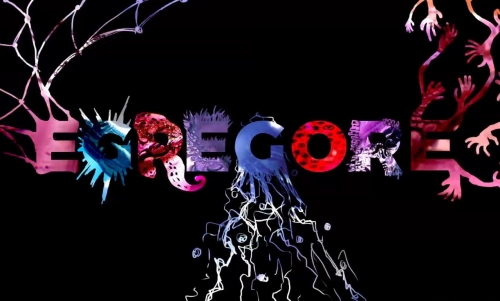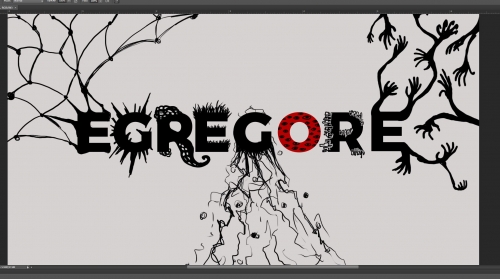THEME: Play and Audience
CONTEXT:
Gameplay live streaming and Twitch has grown significantly over the years. However, there is very little interaction between the viewers and the streamer aside from the standard chat, emotes, and donations. There are also an increasing number of games in the market that have implemented a reward system that gives the viewers or the streamer digital loot or in-game items.
Extending audience interaction, Studio Bean’s Choice Chamber: https://www.choicechamber.com/ is a generative platformer game that gives viewers agency. Through the chat box, viewers can vote on the level type the its obstacles, the streamer’s weapon, abilities, and the enemies they face.
Attempting to build on the active participation of live stream viewers on gameplay elements, I intend to conceptualize a VR game in the same vein as Choice Chamber.
METHOD: To write a concept of a VR game, intended to give live stream viewers collective control over the gameplay experience.
RESPONSE:
Title: Egregore
Egregore is a VR game that puts players in a generative arena that pits them against waves of monsters spawned from a livestream audience’s collective decisions through voting in a chatbox.
Egregore can be played with a VR headset or in first-person perspective. Upon launching Egregore, players/streamers find themselves in a large arena, in a theme voted on by the viewers of the stream. The viewers then vote on the player’s starting abilities and weapons or lackthereof. A variety of monsters are then vote-spawned, according to the choices presented to the viewers. The player/streamer’s objective is to survive and defeat all enemies through what they have. Near the end of each arena, players/streamers will then go up against a boss-type monster, with characteristics, abilities and move sets actively generated or evolved by the viewers.
Weapon and item chests spawn at the end of each monster wave, and after each boss. Which may help the player/streamer progress in the next arena. That is if the viewers don’t get to vote for removing an item or weapon from the player/streamer’s inventory. Players may also combine and craft certain abilities and items to improve their chances of survival and to adapt to the situation. The parameters of each generated arena are then saved in Egregore’s options of levels, available to anyone who wants to go through the same arena. Allowing them to obtain the in-game or cosmetic items that the player or streamer obtained. Another feature may also be implemented wherein there are 2 or more players/streamers fighting to survive in an arena, or perhaps fighting one another amidst the chaos.
Egregore Gameplay Loop:
- Viewers vote for Arena/Environment type and music.
- Player/Streamer spawns.
- Viewers vote for abilities, items, and/or weapons.
- Player obtains abilities, items, and/or weapons.
- Viewers vote for monster types, abilities, and characteristics.
- Player fights off wave of monsters.
- Player opens reward chest.
- Viewers vote for abilities, items, and/or weapons in chest.
- Player obtains new abilities, items, and/or weapons.
- Viewers vote for arena boss type, characteristics, and abilities.
- Player fights boss.
- Viewers vote for the boss’s active moves.
- Viewers vote for the bosses evolution/phases and environmental hazards.
- Player defeats boss.
- Player opens reward chest.
- Viewers vote for abilities, items, and/or weapons in chest.
- Viewers vote for cosmetic rewards in chest.
Egregore Arena Types:
Jungle – Desert – Snow - Grassy Plains – Ruins – City – Mountains- Underwater – Volcano – Colosseum – Temple – Rooftops – Futuristic – Spaceship – Outworld – Clouds – Crystal – Rocks – Town – Underworld – Wasteland – Graveyard – Lake – Escher – Clearing – Poison – Ethereal – Warzone – Laboratory – Hell
Egregore Weather Types:
Clear – Sunny – Cloudy – Rainy – Acid Rain – Fire Rain – Foggy – Stormy – Hail – Snow – Blizzard – Night
Egregore Weapon, Items, and Ability Archetypes:
Swords – Hammers – Axes- Polearms – Bows – Spears – Scythes – Handguns – Large Guns – Claws – Fists – Whips – Large Swords – Daggers – Crossbows - Hybrids – Elemental Magic – Dark/Light Magic – Movement Abilities – Defensive/Attack Buffs – Utility Items and Abilities – Armor Pieces – Shields – Traps – Mounts – Vehicles – Telekinetic Abilities – Summoning Abilities – Grenades – Building/Crafting – Healing – Support
Egregore Enemy/Boss Types and Characteristics:
Elemental – Dark/Light- Humanoid – Beasts- Constructs- Undead – Ooze – Hybrid- Machines – Ethereal –Size (Small/Medium/Large/Gigantic) – Aggressive – Passive – Melee – Ranged – Magic – Multiplies – Reflect Damage – Shielding – Flying – Digging – Teleporting – Auras – Stealth – Spawning – Spiky – Knockback – Shapechanging – Alien – Animals – Cyborgs – Dragons – Insects – Arachnids – Environmental – Mimics – Aquatic – Demons - Buff/Debuff - Mythological – Lovecraftian – Absorb – Traps – AOE – Swarm – Poison – Bounce – Evasive – Agile – Strength – Armored – Telekinetic – Resurrect
Reflection:
Similar to my previous written response for Play and Places, I wanted to again develop a concept wherein I wasn’t limited by my own technical capabilities in interactive/game development. During the week’s discussion about the significance of the audience’s role, I was reminded by the gladiatorial combat arenas in ancient Rome. Wherein spectators would not just watch the violence in the arenas, but also collectively rouse the decision wether or not to dismiss or kill combatants in the end. Myself being a large follower the gaming industry and its personas, I both play and livestream videogames, mostly competitive fighting games, as well as watch streams of a variety of gaming genres. Through my research in the theme of Audience, I found Studio Bean’s Choice Chamber (2015). I then thought of ideas on how its viewer participation/interaction model could be implemented in a VR game. VR, which is inherently and often an individualistic experience. Like the ancient gladiatorial arenas, I imagined what it would be like if a collective consciousness could determine a game’s outcome and gameplay parameters. So I thought of Egregore, which means collective thought or mind in occult concept. A game wherein the player or streamer is fighting against a monster created by people’s collective decisions or consciousness. For the viewers, their incentive is to make their favourite, or hated streamer have a challenging time, as well as collaborate within themselves to reach a consensus that generates gameplay elements and obstacles. The player/streamer is perhaps then rewarded by a growing audience or viewers, and the viewer’s may also be rewarded by in-game items or cosmetics by beating the arena they created. One very recent and effective implementation of rewarding live stream viewers is in Gearbox Software’s new game, Borderlands 3: https://au.ign.com/articles/2019/09/10/how-borderlands-3-gets-streaming-integration-right. A first-person looter shooter where Twitch viewers would also obtain the same item of the streamer who opens a special stream-linked loot chest.
The concept of player-versus-player within Egregore might also create a dynamic, akin to gladiatorial arenas where there are not just human combatants, but lions and other beasts in the fray. This dynamic may also create factions between streamer audiences.
Douglas Wilson’s Designing for the Pleasures of Disputation (p145) mentions the work of Gaver et al. (2009) of the four key metrics of success in evaluating provocative and open-ended designs:
Engagement – whether the users continue to engage with the system over time
Reference – whether the system is understood in terms of other familiar experiences
Accommodation – whether the users integrate the system into their life rhythms and activities
Surprise and insight – whether the system continues to occasion new surprises
I wanted to use these concepts in ideating on Egreore, to effectively encourage audience or viewer interaction. Engagement, the game should excite viewers with the generative and combat systems. They are also primarily the routine audience of certain streamers in Twitch. Reference, using Twitch and Steam as their main interface, the audience is also familiar with the fantasy RPG system in which most of the voted gameplay mechanics are derived from. Accomodation, notifications in Twitch and the streamers schedules are what online game streaming spectators often know. New users or participants may also be gained through social media links. Surprise and Insight, Egregore, akin to its intrinsic game mechanics aims to be continuously evolving, to surprise all players, streamers and spectators.
About This Work
By Carlo Tolentino
Email Carlo Tolentino
Published On: 25/09/2019

